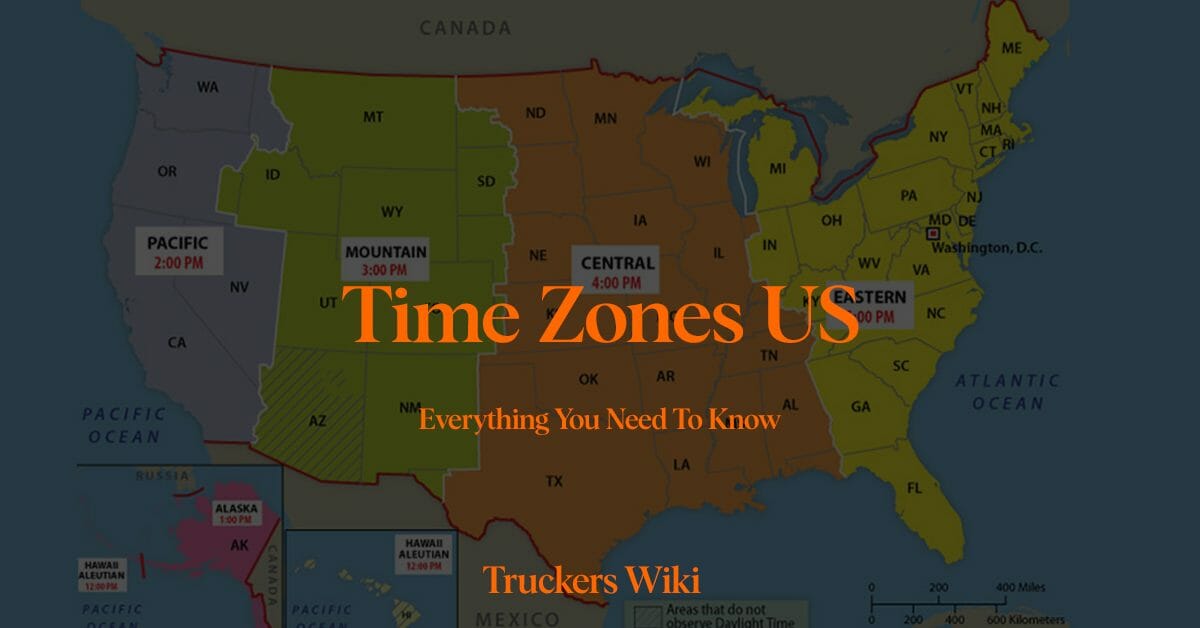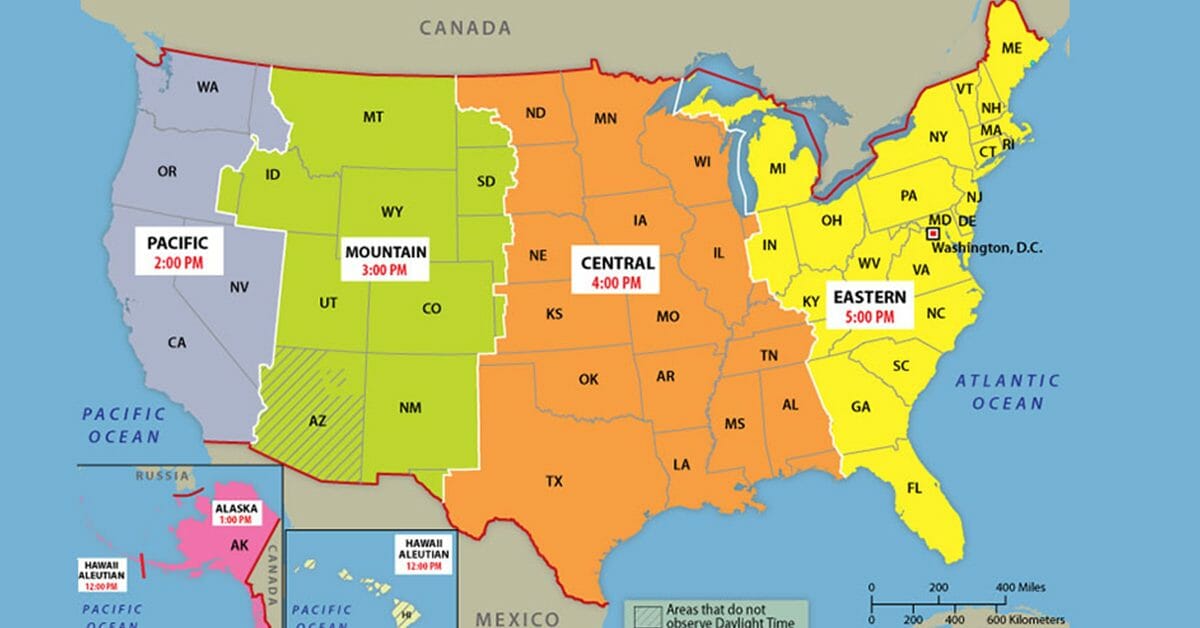
Table of Contents
What are Time Zones?
Time zones are regions of the earth divided by longitudinal lines where the standard time is the same. The concept of time zones was introduced to standardize time across extensive geographical areas, thereby enabling better synchronization of time for commercial, social, and legal purposes.
Whether you’re a seasoned trucking professional or just starting your career on the, understanding time zones is crucial. With the United States spanning across different time zones, this concept may seem complex, but once grasped, it can significantly simplify your scheduling, improve your efficiency, and ensure timely deliveries.
The earth is divided into 24 time zones, each one representing a geographic region in which the local time is the same. Each zone covers approximately 15 degrees of longitude.
U.S. Time Zones
In the contiguous United States, there are four time zones from east to west. These include Eastern Standard Time (EST), Central Standard Time (CST), Mountain Standard Time (MST), and Pacific Standard Time (PST). Each of these time zones is one hour apart.
Apart from the contiguous U.S., there are two additional time zones. The state of Alaska operates on Alaska Standard Time (AKST), and the islands of Hawaii and the U.S. territories in the Pacific operate on Hawaii-Aleutian Standard Time (HAST).
Daylight Saving Time
Another important factor to consider is Daylight Saving Time (DST). Most states observe DST, where clocks are set forward by one hour on the second Sunday in March and set back by one hour on the first Sunday in November. Notably, Arizona (except for the Navajo Nation) and Hawaii do not observe DST.
Importance of Time Zones for Truckers
Understanding time zones is particularly important for truckers, as they frequently cross different time zones during their routes. Here’s why:
Scheduling: Time zones play a critical role in planning and scheduling deliveries. Knowing the local time of both your departure and arrival points can help avoid confusion and ensure timely deliveries.
Regulations: Federal regulations limit the number of hours truckers can drive without rest. Keeping track of time zones is essential to accurately record hours of service (HOS) and maintain compliance with regulations.
Communication: It’s important to consider time zones when coordinating with dispatchers, clients, and colleagues across the country.
Time Zones for Trucking Dispatchers
Just as it is crucial for truckers, understanding and managing time zones is equally important for trucking dispatchers. They are often the link between drivers, shippers, and receivers, coordinating logistics across different time zones.
Scheduling: Dispatchers are responsible for planning and scheduling pick-ups and deliveries. With trucks moving across various time zones, dispatchers need to ensure that the scheduled times align correctly with each region’s local time.
Communication: Communicating effectively with drivers and clients in different time zones is a key aspect of a dispatcher’s role. Ensuring clear communication about which time zone a schedule refers to can prevent potential confusion and delays.
Driver’s Hours of Service: Dispatchers must also consider the impact of time zones on a driver’s Hours of Service (HOS). When planning routes and schedules, dispatchers need to be mindful of the time zone changes to ensure drivers are not exceeding their legally allowed driving hours.
Learn more about HOS here.
Efficiency and Productivity: By managing time zones effectively, dispatchers can improve the overall efficiency of transportation operations. This can lead to increased productivity, timely deliveries, and ultimately, satisfied customers.
Tips for Managing Time Zones
Here are a few tips for truckers to effectively manage different time zones:
- Plan Ahead: Before starting your route, note the time zones you’ll be passing through and adjust your schedule accordingly.
- Use Technology: Many GPS and smartphone apps can automatically adjust the time based on your current location.
- Stay Coordinated: Always clarify the time zone when scheduling pick-ups, deliveries, or check-ins with your dispatch team.
- Know the Exceptions: Be aware of states like Arizona and Hawaii that do not observe Daylight Saving Time.
How to Keep Up With Different Time Zones?
You can keep track of time in different time zones in the US here.
Listen to The Article Here
Map of Time Zones in the US


